If young tomato plants are left growing in a small pot or plug for too long, the roots may start to suffer from being too constrained in the pot. If this continues for too long, the plant becomes “root bound”.
In order for a root bound plant to thrive in the garden, it will need a little help from you to free up the root ball.
This guide will help you find out everything you need to know about how to identify root bound tomato plants and how to fix them!
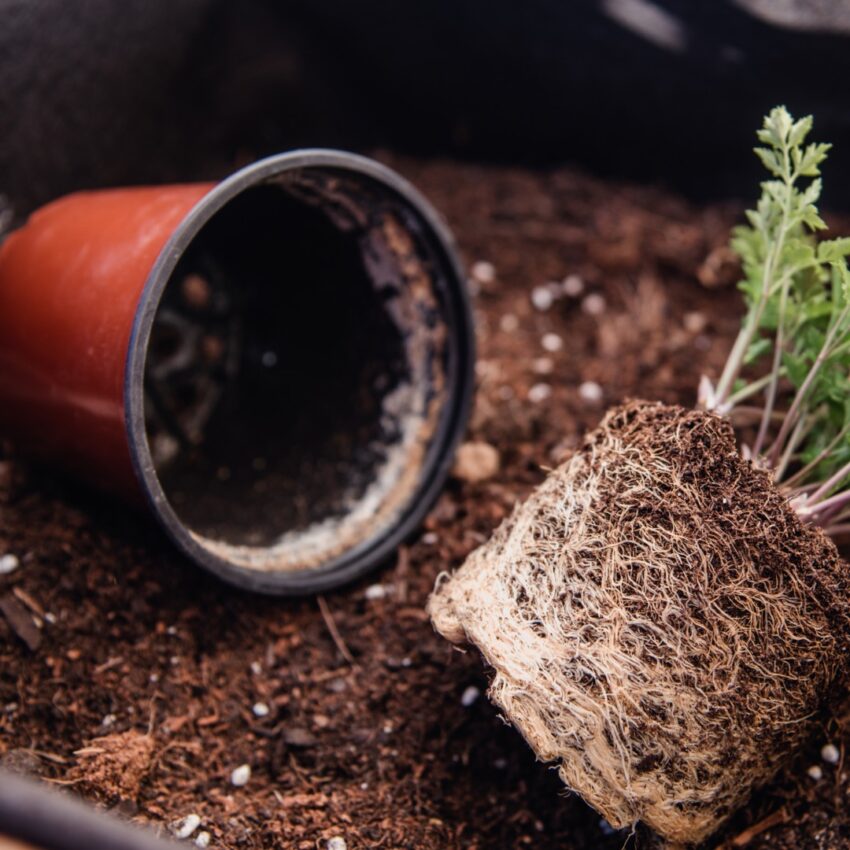
Jump to: Causes of Root Bound Plants | Identifying Root Bound Tomato Plants | Fixes For Root Bound Tomato Plants
This post may contain affiliate links. As an Amazon Associate, I also earn from qualifying purchases. You can read our disclosure information here–
What Does Being Root Bound Mean?
In horticulture, a plant being “root bound” refers to the roots having formed a dense, tangled ball as a result of lack of space.
Given water and light a tomato seedling continues to grow until the roots reach the limits of its container. At this point the roots have no where else to go so they start to circle around each other forming a dense mat that can result in stunted growth.
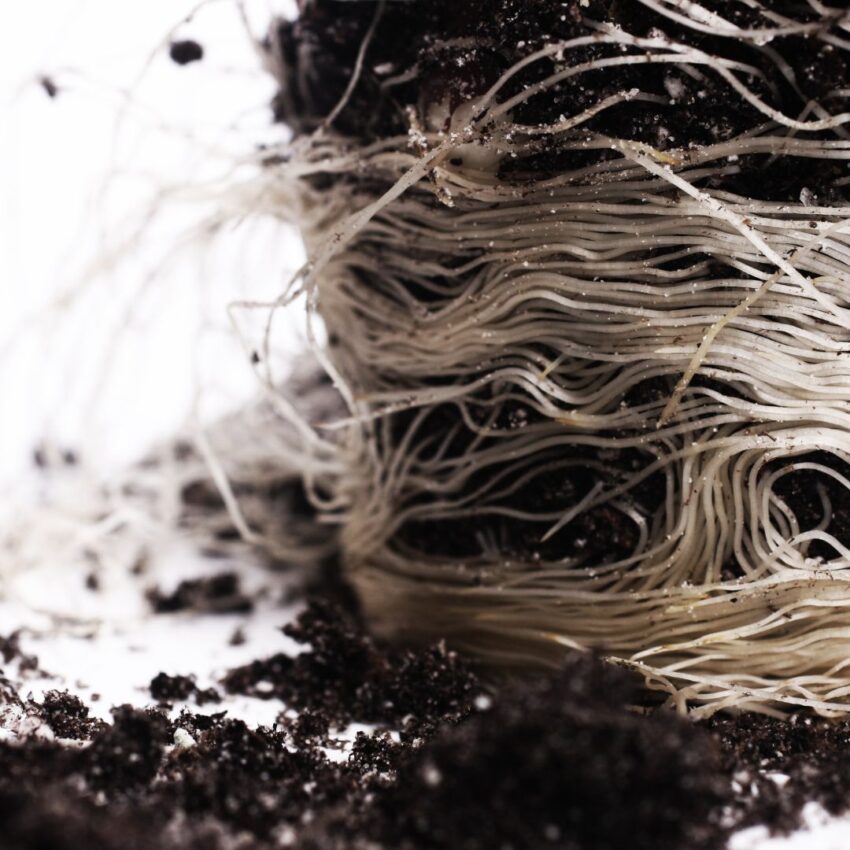
Many houseplants don’t mind being a little root bound and can stay in the same container for years. The same doesn’t go for garden crops however, especially tomatoes.
A tomato seedling becoming root bound in the early stages of growth can stunt the plant and cause problems throughout the rest of the season!
Fear not. With a little extra TLC, you will be able to get those root bound tomato plants back on track so they look like this if you could peek into the garden soil:
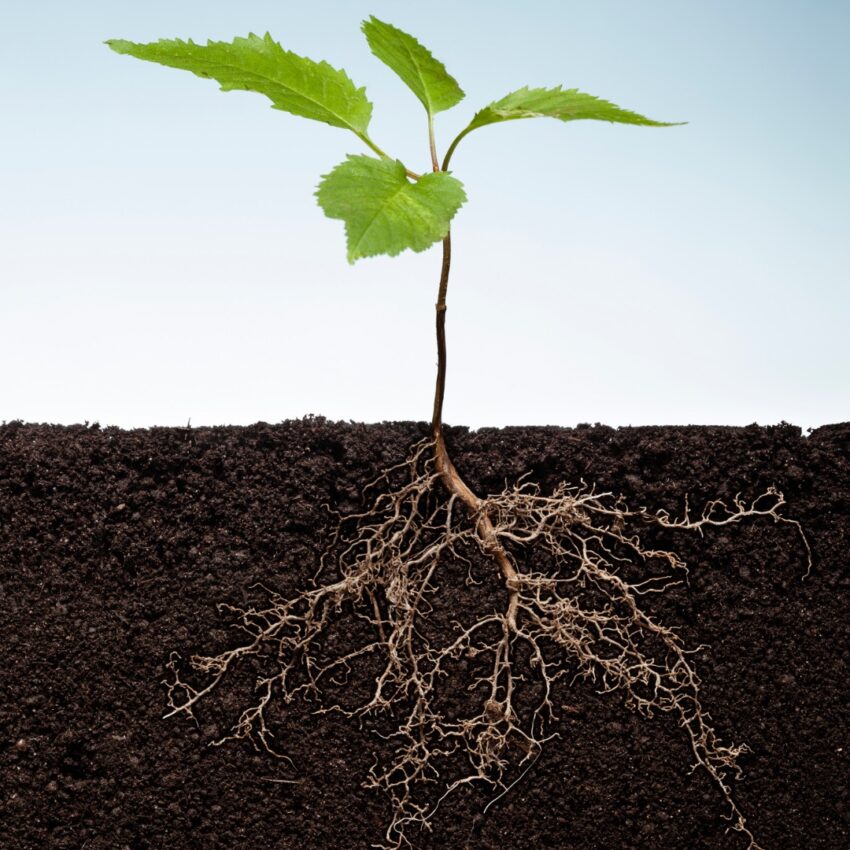
3 Main Causes of Root Bound Tomato Plants
The most common situations where root bound tomato plants are likely to show up include:
- Purchases from commercial outlet. If you buy tomato seedlings from big box stores, it’s not uncommon to encounter ones that are root bound. They’re often kept in smaller seedling pots or even those six-celled trays and not potted up as the season progresses. You can learn more on what to look for in the post on choosing healthy tomato seedlings.
- You waited too long to pot up. If you start your own tomatoes from seed and they are growing well but it’s still too cold to bring them outside, you should repot them into 4″ planters when they have two sets of true leaves. They outgrow the smaller celled trays faster than you can say “root bound”!
- The container you’re using is too small. It is not only the seedling stage where tomatoes can become root bound. Sometimes it can happen if the grow bag or container you’re using is too small. Folks love those typical 5-gallon pots, but for most tomato varieties, you actually need 10+ gallons or your harvest may be limited. You can find more information in the post on growing tomatoes in pots.
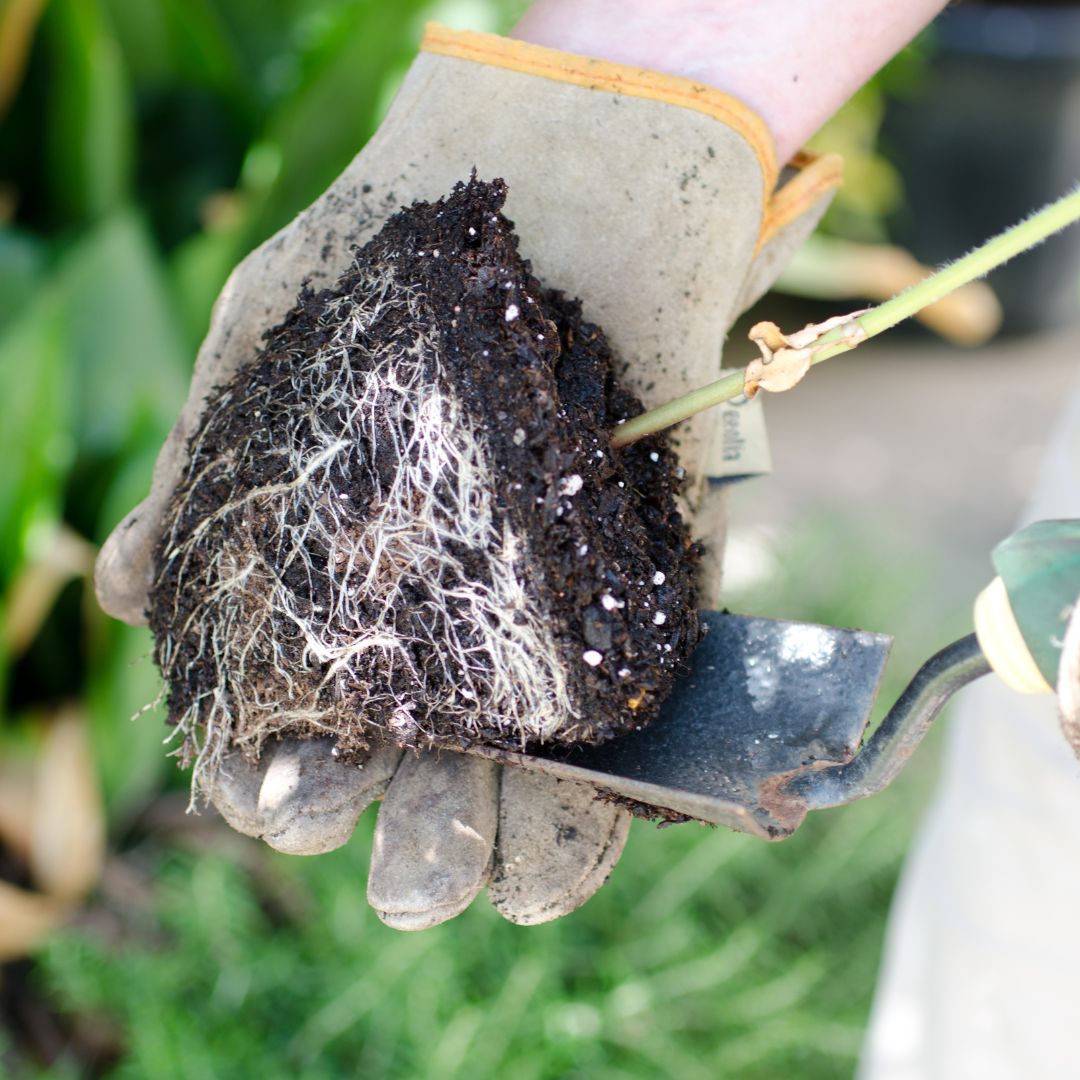
How to Identify Root Bound Plant
Roots Spilling Out of the Drainage Holes
When a plant gets root bound, the roots will look for any possible way to continue growing. In many cases, they’ll end taking the only possible route: out of the pot. If roots are spilling out of the drainage holes, this can be a good indication that the plant is root bound.
Stunted Growth
After a plant has developed 2 sets of true leaves it should start growing fairly quickly given light. If the plant just sits in the pot and doesn’t seem to increase in size, it may be stunted from being root bound for too long.
Misshapen Leaves
One thing that often happens with stunted and root bound tomato plants is that new leaves come out… strange. What happens below the soil is always reflected above the soil as well! If new leaves are small, curly, pale or just generally unhealthy-looking, it’s probably time to take a look at the roots.
Check The Roots
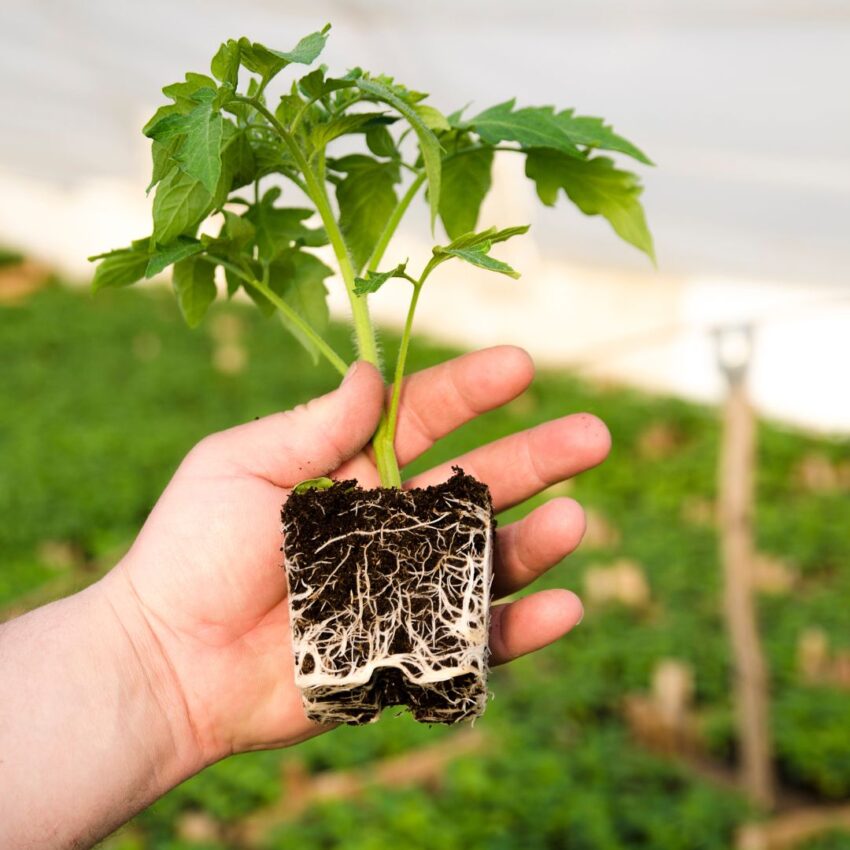
That brings us to the last point. If your tomato seedlings are showing the symptoms discussed above, your best bet is to take a peek at the roots. This will quickly confirm whether they’re root bound or not.
All you have to do is gently grab the plant at the base of the stem. Give the planter a few squeezes to loosen things up. You should then easily be able to lift the whole thing out of the pot in one go.
If the roots are growing into a dense mat around the bottom of the pot., it is probably root bound and may need some TLC.
TIP: If your baby tomato plants are struggling but you’ve concluded it’s not root bound, have a look at the full post on problems with tomato seedlings to help you identify what’s really going on.
How To Fix Root Bound Tomato Plants
So what should you do if you’ve got one or more root bound tomato plants on your hands? Don’t worry, getting them back on track is easy.
If it’s not possible to place them outdoors in the garden (yet), here’s what you can do to set your tomatoes up for success, whether they’re seedlings or adult plants:
- Take the plant out of its pot.
- Loosen the roots. Sometimes you can gently do so with your fingers, while in other cases you have to be a bit more robust. It’s okay, breaking a few roots is not a problem.
- Repot into a larger container with fresh, well-draining soil and a little compost.
- The plant may look a little sad for the first few days, especially if you broke a good few roots. Don’t worry: it should perk back up soon.
If you’re working with seedlings, remember to be sure to harden them off before transplanting into the garden or into larger containers as soon as possible for the best results.
If you like my articles about cooking and gardening, subscribe to my weekly newsletter, where I share free recipes and gardening tutorials.

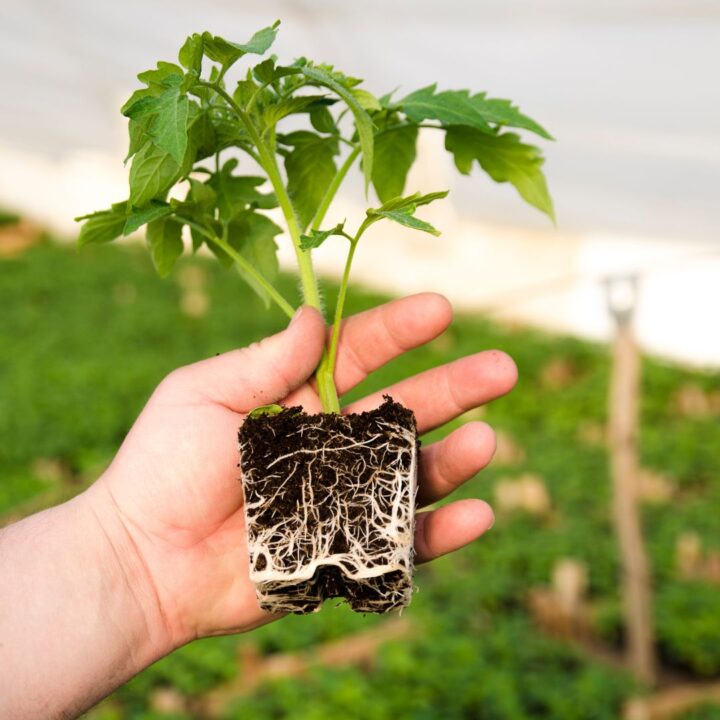
Thank you for all the wonderfully explained tomato care. I’m a horticulturist & no spring chicken but, reading over good information is never a bad idea. From: near Blue Ridge & Skyline Drive, in VA.
Thank you for the lovely comment! So nice to hear from experienced gardeners in addition to novice gardeners!